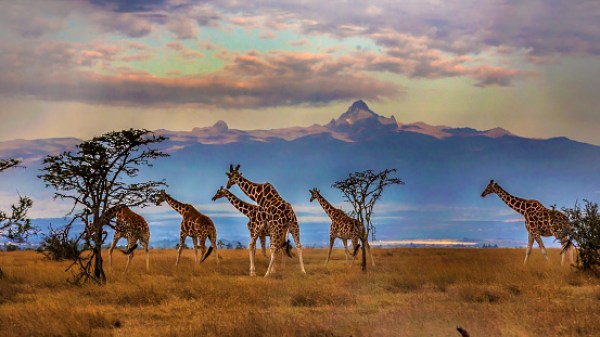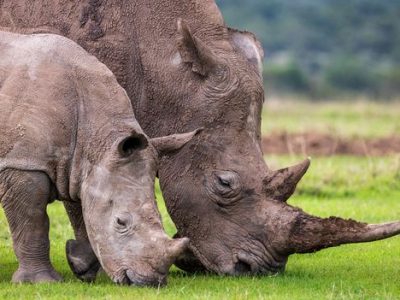
Safaris usually conjure up images of 4x4s and thick, green rainforests — but when you go to Kenya, you can be sure you’re travelling in style.
National Geographic has named Kenya’s horseback safari spots as the best place to travel in 2024, touting its conservation-first approach and all in all more immersive experience.
Specifically, the Maasai Mara is ideal if you want to be in the thick of the wilderness, giving you the opportunity to see animals in the way they’re meant to be seen: peacefully and in their natural habitat.
But its wildlife ethos and conservation efforts aside, there are lots of reasons why you should head to the savannah on your travels this year.
So get your safari hat on and allow us at Metro to tell you everything you need to know about heading to Kenya.

How to get to Kenya
Heathrow is the only London airport that runs direct flights to Kenya, with one-way fares to Nairobi starting at £675. The two airlines you can do this with are British Airways and, obviously, Kenya Airways.
It’s a pretty long journey, generally taking around eight hours, but there’s also the option to stopover somewhere like Germany, Belgium, or France if you don’t mind a little detour.
A 9.50am flight from Heathrow would get you to Kenya by 9.30pm their time, but the trip back is a little shorter. Via Kenya Airways, a 9.20am flight would get you back to London by 3.15pm once you factor in the time difference.

Kenya weather and best time to visit
Because it’s so close to the equator, Kenya is pretty hot no matter what time of year it is, meaning you can escape from the chilly British weather get a little bit of winter sun.
However, the country is also notorious for its ‘rainy’ seasons, of which it has two. The ‘masika’ is the heaviest rainfall, and takes place between Mid-March and May, while the ‘vuli,’ a shorter period of rain, takes place between November and December.
It’s best to avoid the rainy seasons if you can, and it’s also worth noting that the period between June and September is considered ‘peak’ time, so will cost a little bit more.
This is why February, October, and June are probably best for a trip, as that prices are slashed for the ‘off peak’ season and you should avoid the worst of the downpours.

Things to do in Kenya
Kenya’s average daytime temperature oscillates between 20°C/68°F and 28°C/82°F. Devote some time to catching some rays Kenya’s South Coast, which is host to idyllic white sand and palm tree beaches.
More specifically, some of the best coastlines in Kenya include Mombasa, Watamu, and Diani Beach — with all these places offering stunning scenery to make it feel like you really are staying in paradise.
However the main attraction of Kenya is the chance to see the Big Five – lions, rhinos, elephants, leopards, and buffalos – on a safari.
The most famous safari spot is the Masai Mara, and between July and October, it’s you may be able to witness the annual Great Migration, when gazelles, zebras, and wildebeests make their annual crossing over the Mara River to graze on the grasses here.
Alternatively, you can see the Big Five in places like the Lake Nakuru National Park and the Amboseli National Park, which is also a must-visit if you want to catch a glimpse of Tanzania’s Mount Kilimanjaro.

Getting around in Kenya
The mash poa is Kenya’s national bus system, operating in all major cities like Nairobi and Nakura. Tickets cost between 300 (£1.46) and 2500 (£12.18) Kenyan shillings, but with the heat and the scenery, walking is probably one of the more rewarding ways to get around and make the most of the views.
For longer journeys, hire cars are an option in Kenya too, but we’d recommend going for a Jeep or 4×4 because of the rough terrain.
If you want to get a closer look at the Indian Ocean, you could also set sail on a dhow — a traditional wooden sailboat revered in Swahili culture.
And when it comes to safaris, it doesn’t just have to be 4×4 — you can travel via horseback or even camelback.
Where to stay in Kenya
Hostels in Kenya are extremely cheap, starting at £7.09 for a private room, but if you’re more into hotels, there’s plenty of those too.
You can choose recognisable brands like Ibis or live the lap of luxury in five-star hotels like The Bomba Nairobi, which offers stays at just £42 per night this time of year.
Alternatively, you could stay in popular island resort hotels like The Sands at Chale Island or the Sarova Nightsands beach resort, which will set you back from £196 per night.
There’s also different Airbnbs, from rooms to whole villas, in every price bracket.
National Geographic’s best places to travel in 2024
Here’s the full list from the nature magazine’s annual ranking:
- Kenya
- Paris
- Georgia
- Katmai National Park, Alaska
- Kyoto
- Colombia
- New Mexico
- Algeria
- Western Australia
- Panama
- Niagara Falls
- Chile
- Menorca
- Scotland
- Thailand
- Sri Lanka
- São Paulo
- West Virginia
- Hudson Valley
- British Columbia
MORE : Looking for a cheap holiday? These are the best (and worst) travelbooking sites
MORE : Menorca beats Thailand and Brazil on National Geographic’s 2024 travel destination list
MORE : Burnt out and stressed, we moved our five kids into a caravan to travel Australia
Follow Metro across our social channels, on Facebook, Twitter and Instagram
Share your views in the comments below
Get need-to-know travel news, inspiration and advice from Metro every week.
Sign up here…
This site is protected by reCAPTCHA and the Google Privacy Policy and Terms of Service apply.










